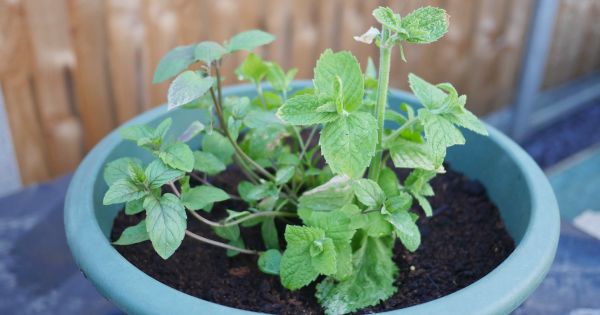Mint


Introduction
Whether used to add flavour in cooking or to make a freshly brewed tea, mint is a great addition to a garden. Mint does not add beautiful flowers, but does add its scent. There is something refreshing and uplifting by being able to pick a few leaves and rub them to release their powerful aroma.
Planting
- If growing from seed, sow in a heated propagator from late winter
- Plants can easily be divided in late summer if a neighbour is willing to share
- Alternatively, buy young plants from garden outlets
Harvesting
- Pick the leaves from April - October (the plant dies back in winter and re-emerges in spring)
(inside)
(outside)
(fresh)
(stored)






 = freeze,
= freeze,  = store
= store
Varieties
Peppermint is my favourite variety of mint to use for making tea, but there are many different varieties and scents including the most commonly grown spearmint, as well as orange mint, apple mint, and pineapple mint.
Shopping for mint varieties in garden centres gives the opportunity to experience the different scents, but the plants can also be grown from seed.
The easy way for a gardener to organise their growing and discover gardening ideas.
Growing
Mint is an invasive perennial plant that spreads through its roots. If not growing in pots, another option is to submerge a bottomless pot in soil to restrict the sideways growth of the plant.
For such an invasive plant, it is surprisingly difficult to germinate from seed. The seed needs to be placed in a warm environment, with germination taking up to one month.
Mint can be grown in partial shade. Keep the soil moist for the best flavour and texture in the leaves.
